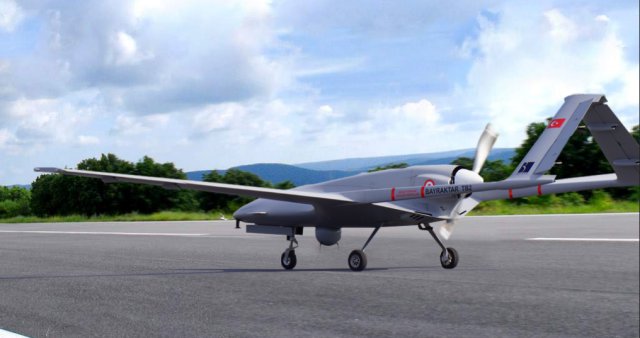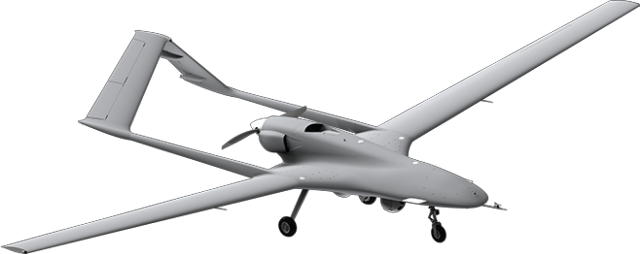Kale-Baykar, a privately owned Turkish venture specialized in drones, has delivered a batch of six armed drones to the Turkish military.
The Turkish Defense Ministry said in a statement that the Bayraktar TB-2 unmanned aerial vehicles, indigenously developed by Kale-Bayraktar, would be stationed at an air base in Elazig in eastern Turkey. Two of the drones are armed, the statement said.
Turkey last year successfully tested the Bayraktar, which hit a target at the Konya fire test field in central Anatolia from a distance of eight kilometers. The Bayraktar uses the MAM-L and MAM-C, two mini smart munitions developed and produced by the state-controlled missile maker Roketsan. Roketsan’s mini systems weigh 22.5 kilograms including a 10-kilogram warhead.
Turkey’s local industry also is developing BSI-101, a SIGINT system, for the Bayraktar in order to end Turkey’s dependence on U.S.-made SIGINT systems for drones.
The Bayraktar can fly at a maximum altitude of 24,000 feet. Its communications range is 150 kilometers. The aircraft can carry up to 55 kilograms of payload.
Turkey plans to extensively use a fleet of various drones in its anti-insurgency fight against Kurdish militants in the country’s eastern and southeastern regions as well as in neighbouring northern Iraq and northern Syria. A top procurement official has declared that the best method to monitor the region and fight these threats was to deploy armed drones.
Meanwhile, Tusas Turkish Aerospace Industries (TAI), maker of the Anka-S, a drone with satcom capabilities, will deliver two aircraft and one ground station to the Turkish military in March. Five more aircraft will be delivered this year, and four aircraft and another ground station in 2018.
In 2013, TAI signed a contract with Turkey’s defense procurement agency, the Undersecretariat for Defense Industries (SSM), for the design, development and production of a batch of 10 Anka-S systems.
The Anka-S can fly with a payload of 200 kilograms at a maximum altitude of 30,000 feet for a duration of 24 hours. The Anka-S features full high-definition day and night vision camera.
The Anka-S started its test flights in the last quarter of 2016. The drone now is going through a qualification process. In the meantime, TAI engineers are developing flight simulators for the drone.
Turkey’s drone efforts do not go unnoticed on international markets, officials say. “Boeing [for instance] is more eager to work with Turkish suppliers after Bayraktar’s success story,” said Hasan Buyukdede, chairman of SAHA Istanbul, an aerospace gathering of business and SSM. “Boeing also examines [for potential business opportunities] four or five other Turkish companies.”
Source: Defense News


